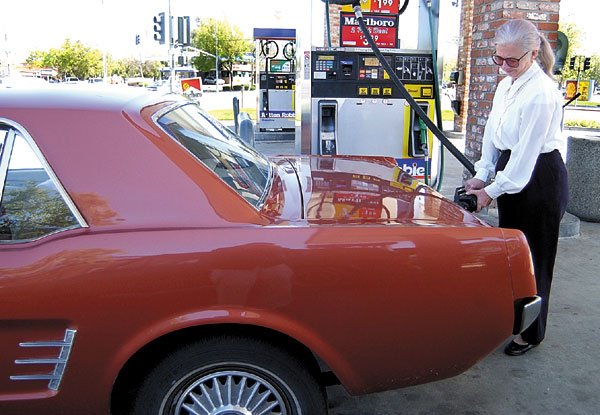As gasoline prices increase, fewer choosing to buy gas guzzling
trucks and SUVs
Gilroy – A few years ago fuel efficiency was rarely a concern of consumers.
But these days, with the average price of gas tipping the scale at nearly $3 a gallon, economy sized cars and compact SUVs are looking mighty tasty.
“This is a total shift,” said Jesse Toprak, executive director of industry analysis with Edmunds.com. “Five years ago they wouldn’t have even asked. It’s not crisis mode … but I think if people are ready to buy a new vehicle, they will seriously consider something that is gas efficient.”
As of last week the cost of regular gas has jumped at least 40 cents higher than last year, according to the American Automobile Association. In Gilroy, the price tag is even higher than the sky-high national average of $2.79 gallon.
Wednesday, the best buy was $2.82 at Shell on Leavesley Road. And on Tuesday in San Jose, the average price topped out at $2.94 a gallon and actually rose to $2.98 just one day later. A month ago, the average price of gas in the city to the north was $2.65 and a year ago $2.64, according to AAA.
Those pumped up costs at the gas tank have definitely affected the sale of local vehicles. Since the beginning of the Iraq War, when the price of oil began to rise, the sale of SUVs has continued to plummet, said Gilroy Honda Sales Manager KB Samaha.
Large eight-cylinder SUVs flooded the market and dealerships weren’t interested in buying the vehicles for trade-in, considering the weak resale value, he said.
“The smaller SUVs survived, the (Honda) CR-V, the (Toyota) RAV4,” Samaha said. “The bigger cars, the gas guzzlers, went down and they’re still affected.”
Toprak concurs. The analyst said extra large vehicles, such as the Suburban, Expedition and Tahoe, is the only subset of the four SUV models that showed a significant drop.
But rising gas prices don’t have any sway on luxury sports utilities since individuals purchasing big ticket items such as the Hummer and Range Rover, aren’t likely to sweat over forking extra cash for fuel, Toprak said.
Also, sales of large trucks aren’t impacted by inflated fuel costs because farmers and construction workers need the vehicles for hauling tools and other materials. They purchase the vehicles out of necessity and don’t have the luxury of considering gas prices.
“It’s been mainly the large SUV category that had the most impact in sales dropping,” he said.
And the proof is in the numbers. In March of 2005, the market share for large SUVs was 5.1 percent and this March it dipped to 3.5 percent.
The 2007 GMC Yukon is selling well but that may have more to do with the fact that it’s only been on the market for a few months, when cars tend to sell well, Tobrak said. Still, the Yukon and Chevy Tahoe are the two most gas-efficient large-scale SUVs out there, he said.
For consumers who head to Honda, which doesn’t sell any eight-cylinder models, good mileage is definitely a concern. Customers main reasons for shopping at Honda are quality – they know the vehicles will last – and because all the cars are gas savers and good for commuting, Samaha said.
And one of the telling signs that individuals are more focused on the gas gauge is evident when consumers opt for two-wheel drives since they get a little bit better mileage than four-wheel drives, said Gilroy Honda Internet Manager Aaron Claverie.
Also, the Ridgeline gets better gas mileage than the majority of large trucks.
“That’s the thing that Honda was known for, especially in the gas crunch of the late 1970s, that’s when the Accord kind of burst onto the scene,” Claverie said. “One of their whole business philosophies is making sure that their cars are environmentally friendly and fuel efficient.”
Although most local dealerships have waiting lists for hybrids and the cars are snatched up once they hit the lot, the vehicles still only account for 1 percent of all car sales. Still, hybrid sales were up 37 percent during the first three months of this year.















